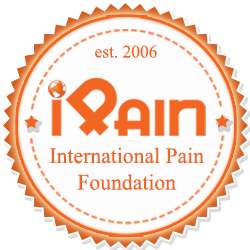This article covers The Relevance Of Physical Exercises In The Aging Process.
Introduction
Aging is a reality most of us are not ready to embrace. Many people loathe aging when it has the beauty of its kind. The later stage of life is the rest phase, where an individual relaxes their mind from all the endurance they have faced and admires life’s beauty.
However, the phase is enjoyable only when your loved ones are there to support you. Many senior home care is filled with elderly who get love, respect, and attention from the care workers, but the desire for family love is not sated, affecting their overall mood and happiness. For their old age to be jolly, they need attention and support from the family.
Another significant factor for a peaceful old age is keeping yourself fit. If you don’t take care of your physical health, you may, at some stage, get bedridden or hardly move around for necessary chores. The elderly needs to exercise to remain fit. The senior home care center stresses exercise, either hard or soft, for the elderly to make them productive physically and mentally.
How relevant is physical exercise in all ages?
Regular physical activity is proven to help prevent and manage non-communicable diseases such as heart disease, stroke, diabetes, and several cancers. It also helps prevent hypertension, maintains healthy body weight, and improves mental health, quality of life, and well-being.
4 Ways Exercise Helps Stop Aging
1. It builds muscle strength.
With growing age, people lose muscle mass and strength, a condition is known as sarcopenia. Scientists say resistance training is one of the best ways to help slow that decline. It maintains muscle strength and power and makes everyday activities such as cooking, cleaning, and ascending stairs less complicated. It can also help one be less prone to diseases, improve brain health and mood and help you maintain an independent life for a longer time. Researchers at the University of Alabama found that resistance training is safe and effective for older adults, with rates of injuries shallow and similar across all ages and intensities.
2. It improves bone density.
The body breaks down old bone and replaces it with new bone tissue as a biological process to maintain the strength of the muscles. However, around 30 years of age, bone mass stops increasing. In middle age (40s and 50s), a person slowly loses more bone than is made in the body. Exercise can help increase bone density when you’re younger and eliminate the chances of osteoporosis, a disease that weakens bone and increases the risk of breaks as you age.
According to the National Osteoporosis Foundation, Nearly half of all adults at 50 and above are at risk of breaking a bone due to osteoporosis, which costs the health system $19 billion annually. But that doesn’t mean that older people are powerless; doing weight-bearing exercises throughout life helps increase bone mass and strength.
3. Exercise can lengthen telomeres.
Telomeres are the cap-like structure on the ends of DNA strands present to prevent chromosomes from running out of DNA sequences and dying. As we age, the telomere content is lost in some minute amount in each cell division cycle. Telomere length relates to chronic conditions, high blood pressure, stroke, and heart disease. Several studies have found that a higher level of physical activity is related to longer telomere lengths in some people compared to those less involved in physical activities. It is especially true in older people. However, it’s still unclear whether that relationship is causal, and multiple processes likely affect telomere length. But in general, longer telomeres are believed to be a plus for reducing the risk of age-related diseases.
4. It can improve cognition.
The human ability to shift quickly between tasks, plan an activity and ignore irrelevant information are all signs of good cognitive function, according to the National Institute on Aging. The definition of intelligence is also based on these three points.
Physical activity today is one of the most promising methods for improving cognition throughout life and reducing the risk of age-related decline in cognitive abilities. Some researchers believe that exercise can prevent dementia, and studies show that more physical activity is linked to reduced risk of dementia, including Alzheimer’s disease. However, they are working to find solid evidence to support the statement.
Author: Qasim Ashfaq
Publisher: International Pain Foundation, iPain Blog, Team iPain

